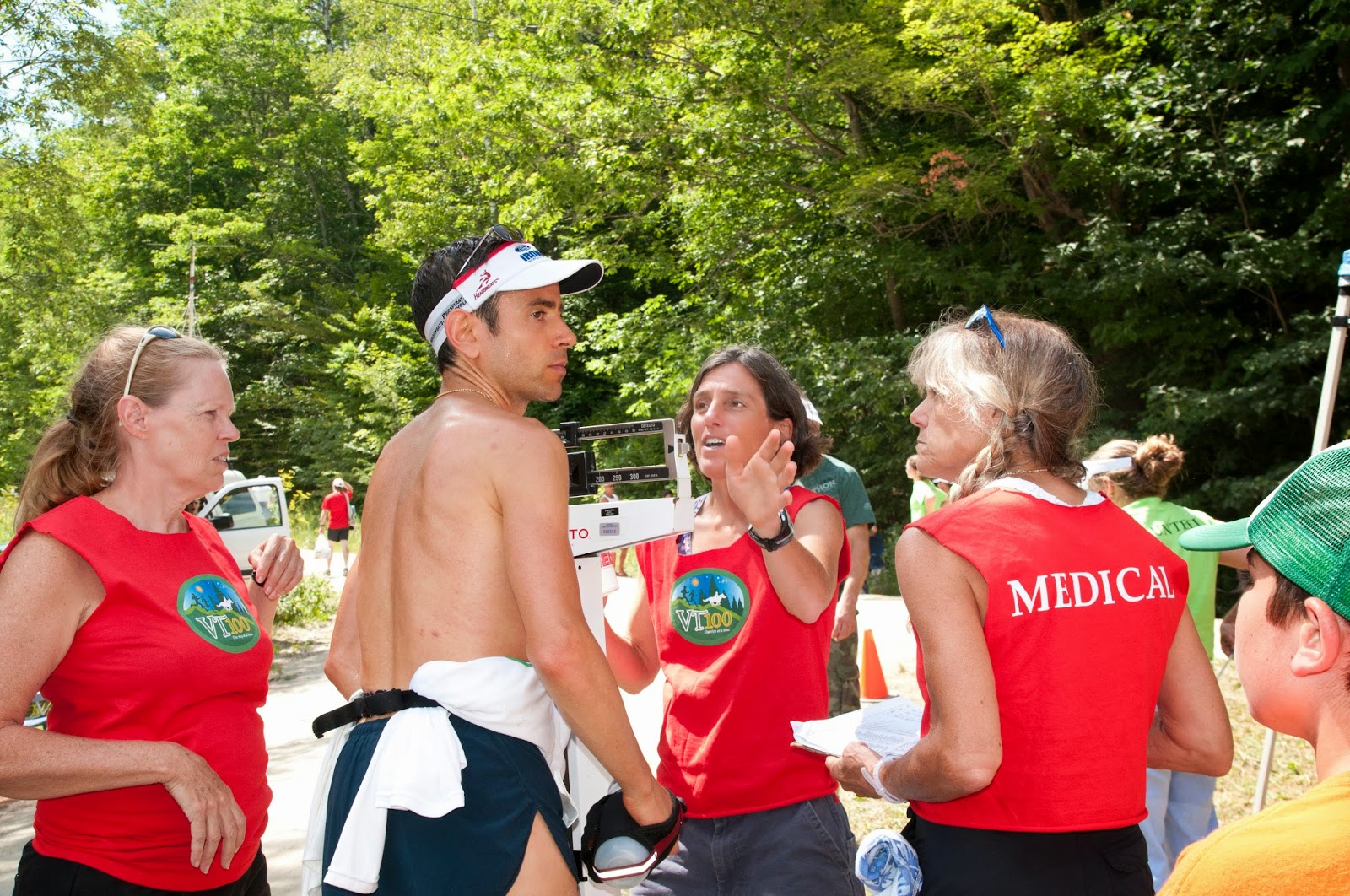A Note From the Medical Director
One of the qualities that makes a good ultrarunner is stubbornness. However, this trait can also be a liability. It is critically important to be able to distinguish between when you should tough it out, and when you need to stop. That’s why we have skilled and knowledgeable medical professionals at the VT100 to help save us from ourselves when we truly need it.
The major addition this year is the Medical Director’s decision to immediately disqualify runners that exhibit signs of significant Rhabdomyolysis and Trench Foot. Once these conditions have developed, any further running or exposure to the elements can be life or limb threatening, even in the early stages of severity.
Here’s what the VT100 Medical Director, Dr. Rick Marasa, and his experienced team will be looking for:
Rhabdomyolysis
- Rhabdo is muscle tissue breakdown resulting in the release of a protein into the blood that can damage the kidneys.
- Symptoms include dark, reddish urine, a decreased amount of urine, weakness, and muscle aches.
- Early treatment with aggressive fluid replacement reduces the risk of kidney damage.
- The recovery can take several months and is a bigger problem in runners who have exerted themselves beyond their level of training.
- Urine dipstick testing strongly for blood will be available (and used, as needed) at the VT100 stations with medical providers.
- Since there is no direct correlation of weight loss to Rhabdo or hydration/circulation status, VT100 medics will conduct urine tests only when clinically indicated.
Trench Foot
- Trench Foot is severe pain in the feet that is associated with prolonged exposure to wet/cool environments.
- The feet might show only minimal physical redness or blanching.
- Much like its “cousin” frostbite, re-exposure can result in severe symptoms, tissue damage (blisters, open sores, fungal infections, etc.) and even necrosis (cellular death).
- As trench foot worsens, feet may also begin to swell.
- Trench foot can be prevented by keeping the feet clean and dry. Runners should change out of wet, dirty socks and shoes, and into clean, dry pairs.
- VT100 medics will be asking runners about foot pain only when clinically indicated.
“Both of these conditions are essentially silent killers. When runners try tough it out and overcome them, they put themselves at a very high risk of increasing the severity to life and limb threatening levels.”
– Dr. Marasa
All runners must follow the direction of the Medical Director and his experienced, knowledgeable team. Your longevity in this wacky sport depends on it!
Remember: Although medical personnel will assist you when possible, you are ultimately responsible for your own well-being. Monitor yourself and prepare to drop out at the nearest aid station if you don’t feel well. As you run, be aware of the number of miles to the next aid station. There’s no shame in knowing your limitations. Several drops have come back to finish (or win) the VT100 the following year.

